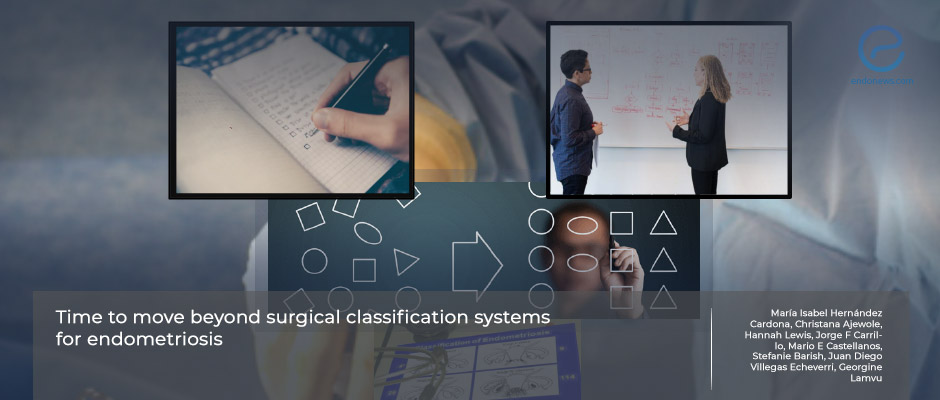Limitations of current surgical classification systems for endometriosis.
Jun 29, 2023
Current classifications strongly depend on laparoscopic findings.
Key Points
Importance:
- The current surgical endometriosis staging systems do not accurately predict outcomes and recurrent disease risk.
Highlights:
- The surgical classification system of endometriosis relies solely on descriptors of lesion locations and the depth/extent of the disease.
- The pain severity and infertility status that affects the quality of life and personal features should be added to future classifications.
What's done here:
- This article is written for the necessity of a new restructuring by emphasizing the failures of the current endometriosis Classification systems.
- Authors from Columbia, USA, and the UK discussed the strengths and limitations of the current classification systems to underline the need for better classification in the future.
Outlines.
- The limitations of the current classification of endometriosis should be well-discussed with patients, clinicians, and surgeons.
- Since laparoscopic and histologic confirmation of endometriosis is a gold standard, it is unsurprising that the primary classification system depends on the laparoscopic extent of the disease.
- Current classifications are insufficient to explain the systemic and inflammatory features of the disease.
- Undoubtedly, pain-related symptoms and infertility with sexual dysfunction and physiologic distress impaired personal relations, quality of life, and ability to work must be detectable and traceable in novel classifications.
- Poor correlation between staging and surgical outcome is another problem of currently accepted classifications.
- The new classification system should incorporate variables such as the patient's history, distress, discomfort, and surgical features.
Lay Summary
Many classification systems for endometriosis have been developed since the 1970s, and in a 2021 review, more than 20 of those systems were identified. The best-known and most frequently used are rASRM (revised American Society of Reproductive Medicine), the Enzian classification for deep endometriosis, EFI (endometriosis fertility index), and AGGL (American Association of Gynecologic Laparosopists classification systems. Except for EFI, the most commonly used systems are based on the anatomical location, the number, and depth of the endometriotic lesions.
The above popular classification systems do not correlate with pain severity, disease progression, recurrence after treatment, and quality of life. Poor correlation between surgical staging and outcome encouraged Cardona et al. from Clinica del Proda, Columbia, to write an article to call on the issue.
To support the current status, the authors gave examples from the literature and explained the weakness of the classification systems.
"To be beneficial for patients with endometriosis, a classification system will need to incorporate the surgical findings and other variables such as duration, severity, and type of pain, infertility, distress, disability, family history, genetic, and biomarkers," concluded the authors.
This paper is recently published in the International Journal of Gynecology and Obstetrics.
Research Source: https://pubmed.ncbi.nlm.nih.gov/37101408/
chronic pelvic pain diagnosis classification fertility prognosis quality of life staging endometriosis.

